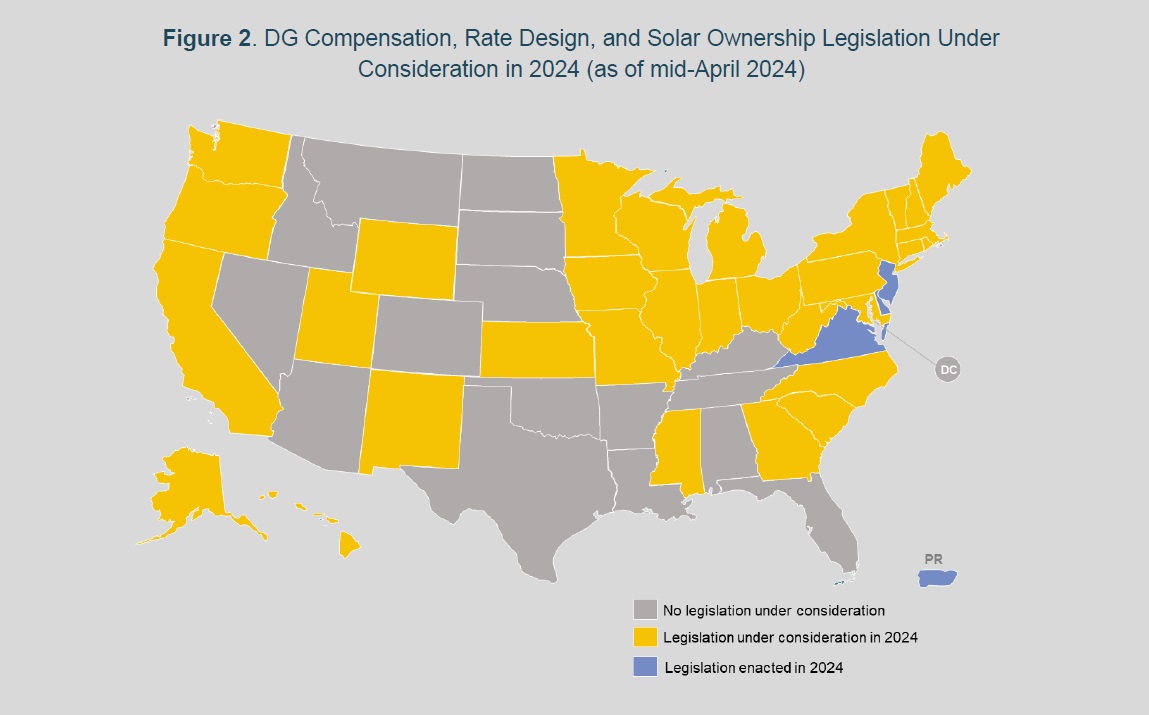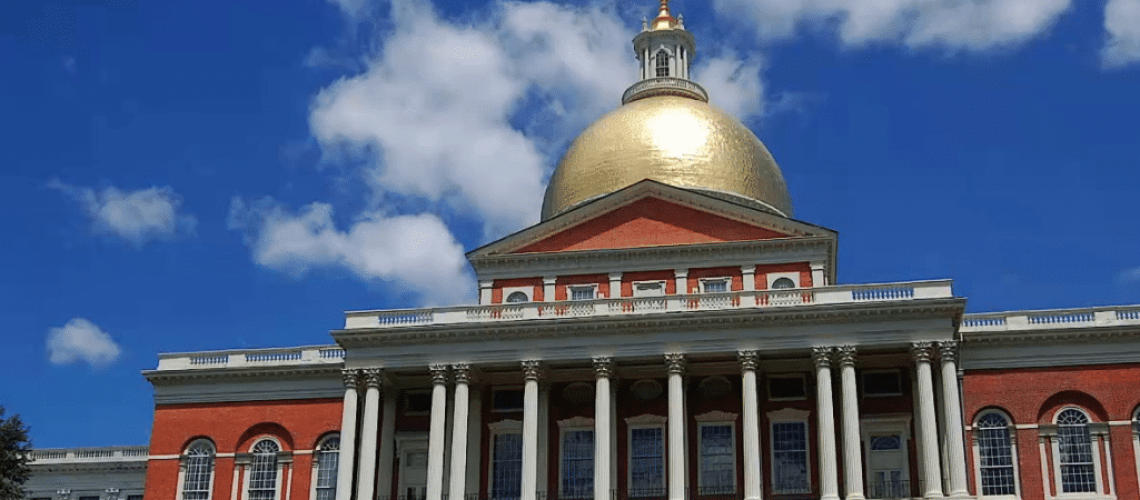Trends spotted in the NC Clean Energy Technology Center report include legislation to enable community solar, net metering reform considered by new states and states clarifying time of use rates for net metering customers.
The NC Clean Energy Technology Center (NCCETC) released its Q1 2024 edition of its 50 States of Solar report, which looks at changes in policies on net metering, distributed solar valuation, community solar, residential fixed charges and more.
NCCETC is a public service center administered by the College of Engineering at North Carolina State University, with a mission to advance a sustainable energy economy by educating, demonstrating and providing support for clean energy technologies, practices, and policies. The Center is known for its DSIRE database that tracks incentives in all 50 states for renewable energy and energy efficiencies.
The Q1 2024 report finds that 43 states plus Washington DC and Puerto Rico took a total of 163 actions related to distributed solar policy and rate design. The map above summarizes state actions related to compensation for distributed generation (DG), rate design, and solar ownership. Of the 163 actions cataloged, the report authors note that the most common were related to DG compensation rules (56), followed by residential fixed charge and minimum bill increases (42), and community solar (37).
Trends spotted in the report include legislation to enable community solar, net metering reform considered by new states and states clarifying time of use rates for net metering customers.
Community solar is a way for homeowners, businesses and other organizations to invest in the benefits of clean energy when they have unsuitable conditions for rooftop or on-site ground-mounted installations. While installations of community solar contracted in 2022, Wood Mackenzie forecasts the U.S. community solar market to grow 118% over the next five years, with at least 6 GW expected to come online in existing markets between 2023 to 2027.
The NCCETC report finds that an increasing number of states are considering community solar legislation. For example, Pennsylvania recently passed a bill that would establish a community solar program, and similar bills are pending in Michigan, Ohio, and Wisconsin. Legislators in Missouri are taking a slightly different approach with bills introduced that direct electric suppliers to create three-year community solar pilot programs, and similarly, West Virginia lawmakers intend to create a pilot program. Alaska, Georgia and Iowa also have community solar bills pending.
It comes as no surprise that more states are considering changes to their net metering rules, following in the footsteps of California’s NEM 3.0, which has become the solar policy story of the year. In Delaware, for example, lawmakers approved legislation to conduct a net metering cost-benefit study, and regulators in Wisconsin are also conducting a value of solar study. In Kentucky, Duke Energy wants to implement a net metering successor tariff that would involve real-time netting and reduced compensation for exported energy for new customer-generators. A Washington utility is preemptively amending net metering tariff language to close the tariff upon reaching an aggregate cap.

States and utilities are increasingly moving to time-of-use rates because they vary the cost of electricity according to when it’s used. For example, a solar-powered home generates electricity during the day, when rates are cheaper, but the household may use the most electricity in the evening, when it is more expensive. Examples of states taking steps to clarify how net metering is conducted on a time-of-use rate basis include Kansas, Maryland and North Carolina.
Maryland’s Public Service Commission recently directed its rate design working group to examine utility tariffs and propose any needed charges for net-metered customers under time-of-use rates. In South Carolina pending legislation would increase the state’s net metering system size limit, but only for customer-generators on time-of-use rates.
The Q1 report noted top solar policy developments, which are both good and bad for electric customers generating their own solar electricity. In Massachusetts, which has especially solar-friendly policies, regulators voted to allow electric customers to transfer credits across utilities. Plus some systems are exempt from the state’s net metering caps.
Virginia, historically a coal state, voted in 2020 to close all the state’s coal power plants by 2024. This is part of the forward-looking Virginia Clean Economy Act, which requires the state’s utilities to switch to 100% clean energy by 2050, while also adding 16 GW of solar and onshore wind, 3 GW of energy storage. Now legislators have gone a few steps further by passing bills that increase the capacity of Dominion Energy’s community solar program and direct regulators to set up a community solar program for Appalachian Power customers. Other bills under consideration in Virginia would expand solar leasing and power purchase agreements.
West Virginia, another former coal state, adopted net metering reforms that sets export credit rates at 8.91 to 9.343 cents per kWh in Monongahela Power & Potomac Edison’s rate case.
The Arizona Corporation Commission (ACC) approved a request from major utility Arizona Public Service to raise electricity rates for all customers, assess fixed charges, and to single out those who have invested in rooftop solar with the largest of such charges. The approved charge equals $0.242 per kW of on-site generation for customers on standard time-of-use rates and $0.215 per kW for customers on the time-of-use rate including a demand charge. The report notes that several participants have filed petitions for rehearing to overturn the grid access charge.
To produce the quarterly 50 states report, NCCETC reports that it looks at important proposed and adopted policy changes affecting solar customer-generators of investor-owned utilities and large publicly owned or nonprofit utilities serving at least 100,000 customers.



